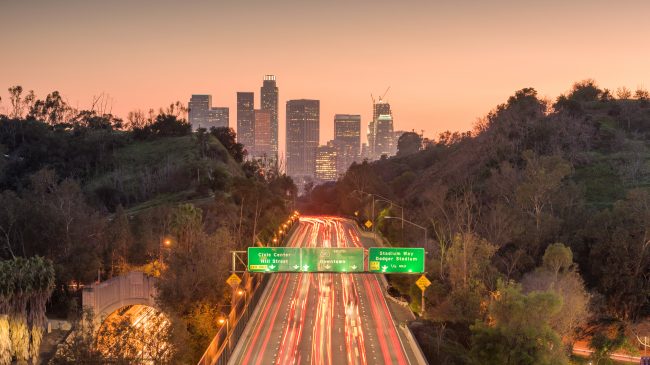Should recently built carpool lanes on I-5 in Orange County be converted to toll lanes?
Concerns have been raised that these new lanes were paid for by Measure M2 sales tax money. So why should people have to “pay twice” to use them?
It’s a good question, and it deserves a thoughtful answer.
For context, let’s begin with some terrible numbers. The Los Angeles-Orange County metro area once again ranked worst, by a wide margin, in chronic freeway congestion in the Texas A&M Transportation Institute’s 2019 Urban Mobility Report. The region had the worst traffic delays per auto commuter — 119 hours a year; highest congestion costs per auto commuter — $2,440 a year; most regional hours of traffic delays — 971 million hours per year; and worst total direct costs of congestion (in wasted time and fuel) — $17.8 billion per year.
Since the vast majority of people depend on cars or buses for commuting, we need to reduce traffic congestion across Southern California. Experience has shown that carpool (HOV) lanes are not a sustainable solution. Most California HOV lanes fail to meet the federal standard of maintaining travel speeds of at least 45 miles per hour over 90 percent of rush hour travel periods. As Orange County’s population continues to grow, the same will happen to new HOV lanes, like those on I-5 in South County.
The only proven way to reduce freeway congestion is priced express lanes, which were pioneered 25 years ago on Orange County’s SR 91. They use variable pricing to raise and lower prices so the lanes are always free-flowing, even during peak travel periods.
All three major metro areas in California have long-range plans for entire networks of express lanes. The program in the San Francisco-Bay Area encompasses 600 miles of lanes. As is true in San Diego, and should be the case in Los Angeles-Orange County, these networks are being created by both converting existing carpool lanes and building new express lanes. Both are essential, and where new lanes are required, the cost can easily reach billions of dollars (as on the current project on I-405 in North County). So, relatively speaking, converting high-occupancy vehicle lanes is inexpensive, simply requiring adding electronic tolling equipment and pricing signs.
Squabbling over how recently an HOV lane was built, or who paid for it, is understandable but besides the point. To make a serious dent in chronic congestion (present and future), creating a network of express lanes is essential. In Orange County that means, for example, the entire length of I-405 and of I-5 should have express lanes.
Compared with San Diego and the Bay Area, Orange County is best positioned to build such a network, and at lower costs. Caltrans and the Orange County Transportation Authority have already built the most extensive set of HOV-to-HOV flyover connectors in the state.
Each flyover is expensive, but they are essential to creating a seamless network, where drivers can connect from the priced lane on one freeway to the priced lane on another freeway without having to cross multiple lanes of stop-and-go traffic.
Even so, the cost of that network in Orange County will still be many billions. That’s pricey, but remember today’s congestion costs area motorists $17.8 billion in direct costs — every year. Building the network at the lowest feasible cost requires taking advantage of the existing carpool lanes and the HOV-to-HOV connectors. Doing so will minimize the number of costly new lanes, such as those being added to the 405 in North County.
The bottom line is this is not “paying twice” for existing HOV lanes. Rather, it is being smart by utilizing existing components of the road network to minimize the amount and cost of new lanes
Orange County was the site of the world’s first priced express lanes in 1995. With sensible planning, it could also be first in the nation with a seamless network of priced express lanes. That’s a goal worth pursuing.
This column originally appeared in the Orange County Register.

